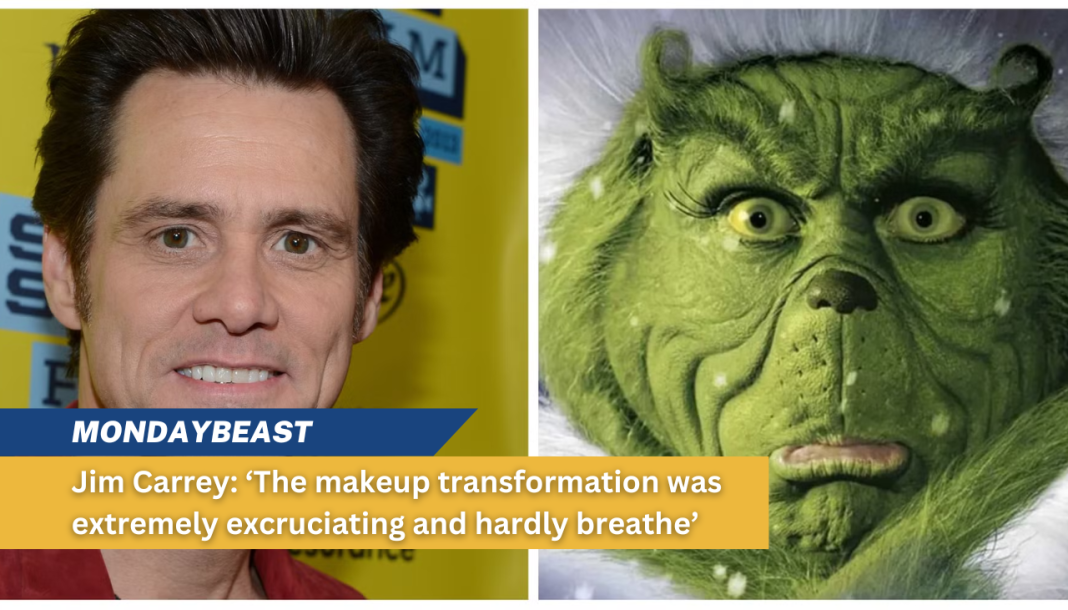A Grinch Comeback
Imagine this: Jim Carrey, the zany genius behind the iconic Grinch, is ready to don the green fur again. But there’s a catch. He wants to do it with motion capture technology, bypassing the arduous makeup routine. Is it a genius move or nostalgia gone awry?
In a recent chat with ComicBook.com, Carrey made it clear. The throne of Whoville beckons, but a caveat looms. “It was an extremely excruciating process,” Carrey said about the grueling makeup sessions. And who could blame him? The experience can be likened to a marathon with no finish line. Hours spent in a chair, every layer of paint suffocating and stifling creativity.

This brings us to an interesting question: Should actors endure physical discomfort for their art? For Carrey, it was all for the kids. He claims he kept repeating, “It’s for the kids. It’s for the kids.” But how much should one sacrifice for a role?
The Excruciating Experience
Carrey’s transformation into the Grinch was not just physically exhausting. It was a mental challenge, too. The process took its toll on both him and the makeup team. Kazuhiro Tsuji, the special effects makeup artist, faced his own trials. After working with Carrey, he candidly shared his struggles. He even sought therapy following the production.
Imagine the pressure. The makeup trailer would buzz with the hum of creative energy. Yet, the air was thick with tension. Carrey’s meticulous nature led to daily confrontations over makeup color. Tsuji recounted Carrey’s sharp-eyed critiques that would leave most people reeling. “This color is different from what you did yesterday,” Carrey would point out.

Every day turned into a nail-biting session of adjustments. Tsuji felt overwhelmed, even needing a break from the chaos. The relationship between actors and their makeup artists is so critical, yet it can be tumultuous. How does one balance artistry with mental health? Are filmmakers doing enough to support their teams?
The Box Office Boon
Despite the turmoil behind the scenes, Carrey’s portrayal of the Grinch remains a beloved classic. “How the Grinch Stole Christmas” amassed a staggering $346 million at the box office. While reviews were mixed, audiences clearly adored Carrey’s quirky interpretation.
It raises a thought—was the pain worth the gain? The movie garnered three Oscar nominations, validating the hard work of everyone involved, including Tsuji. Yet, at what cost? Carrey’s struggles contribute a layer of complexity to his celebrated performance. Should we celebrate actors for their craft or for how they manage their mental well-being?
Hopes for the Future

Fast forward to today. The landscape of filmmaking is evolving. With motion capture technology, actors can escape the clutches of uncomfortable situations. Imagine Carrey’s Grinch, free to explore newer, wilder interpretations, without the hefty makeup chair saga.
“Anything is possible in this world,” Carrey optimistically suggested, envisioning a fresh take on his cherished character. This statement resonates deeply in an industry striving for innovation. Are we entering a new era of creativity where digital effects can ease actor burdens? Should we embrace this balance of tradition and technology?
Conclusion: The Grinch Returns?
Will Jim Carrey indeed return as the Grinch? If motion capture paves the way, it could be a win-win for all involved. Who wouldn’t want to see that unique charm return without the pain? As fans eagerly await, one thing is certain—the Grinch’s legacy endures, challenges and all.
The story may take a new twist, but the heart remains the same. It reminds us that growth often comes from discomfort. And perhaps, most importantly, it raises questions about the future of performance and artistry in filmmaking. Can we find a balance between the two?




